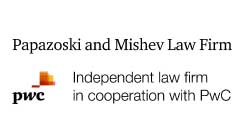Although there are several incentives for renewable energy projects supported by the state, there also seem to be several factors that could impede Serbia’s potential for renewables and deter further investments in the sector. Kinstellar Belgrade Managing Partner Branislav Maric, JPM Jankovic Popovic Mitic Senior Partner Jelena Gazivoda, and Gecic Law Partner Ognjen Colic weigh which will carry a stronger impact.
Serbia’s Cunning Plan
“We have recently been seeing interest in the development of new renewable capacities, both from investors that have been in the Serbian market for a longer time and from a number of new investors,” Maric says.
According to Gazivoda, the main existing investors in the renewables sector in Serbia “are famous international companies Masdar (Abu Dhabi Future Energy Company), Taaleri Energia (a Finnish development company for energy infrastructure), KfW Group subsidiary DEG, and Enlight Renewable Energy.” About the newer players, Maric says “there are several investors from Western Europe, the US, Turkey, and China, as well as some domestic players.” According to him, “the main focus is still on wind projects but there is an increasing number of photovoltaic power projects, both separate and prosumer projects.”
Colic highlights that Serbia’s new developments in the renewable energy sector are part of its larger ambitions in terms of energy. “Serbia’s share of renewable energy sources in final energy consumption is now around 20%,” he says. “To rapidly expand in this area, the Government of Serbia announced an ambitious plan to boost investments and achieve a 40% share of renewables by 2040.”
Energy Potential and State Incentives
Gazivoda emphasizes several factors that draw investor attention to the renewables sector in Serbia. First of all, she notes, “there is the local availability of energy and energy sources in Serbia, in terms of the existence of all types of renewable energy sources – sun, wind, hydropower, biomass, biogas – as well as coal.” She also points to the country’s determination to implement the Green Agenda, “as well as long-term support from international financial institutions, especially the EBRD, World Bank, and European Investment Bank.” According to her, “the EBRD has supported the two largest investments in the country’s renewable energy sector so far – wind farms Cibuk 1 and Kovacica – which, combined, produce electrical energy for around 180,000 households.”
Colic also says that investors primarily look at Serbia’s potential for producing renewable energy. For example, he says, “the country has a considerable solar energy potential which, so far, has been underdeveloped,” and there are also plans to “modernize and increase the capacity of the Djerdap hydropower station on the Danube, shared with Romania.”
For Maric, “the main attraction point appears to be the solid track record during the initial phase of investments into renewables in Serbia.” Overall, he says, “the main incentive appears to be the common belief that, going forward, renewables are supposed to be the major contributing factor in the energy offering in the majority of countries,” and that “the current high pricing for energy means that investors do not need major incentives to make their investment decisions.”
The experts also highlight the currently in-place incentives aiming to stimulate the renewable energy sector. “The state took several regulatory steps, including passing four critical energy and mining laws last year, intended to facilitate investments by introducing a subsidy system,” Colic says. Gazivoda says that the four energy laws “introduced guarantees of origin, net metering for prosumers, community-scale projects, and public tendering for strategic partnerships on investments in building renewable power plants.” Looking at the complete 2021 package, Maric says it was “a very solid upgrade to the applicable legal framework for renewables … under which we should have auctions in this sector in the coming period.”
Pent-up Energy
Despite the fair amount of success, the experts also point to the main factors that could deter more investment in Serbia’s renewables. Maric notes that the regulatory framework needs to be finalized, especially “in light of the still-missing decree on balancing responsibility,” and that “challenges with securing appropriate grid connections in some parts of the country are the key formal and practical impediments for the sector’s even faster and more substantial development.”
Colic agrees, saying that while the new laws have resolved some of the issues renewables faced in Serbia, “in practice, the regulatory framework is still relatively rigid, especially when obtaining authorizations to, for example, change the purpose of agricultural land.” Similarly, Gazivoda reports the slow speed of project development has predominantly resulted from the “delayed enactment of relevant secondary legislation, which should have enabled the implementation of the incentive novelties introduced by the recent legal changes.”
According to Colic, complicated administrative procedures are also an issue. “Various institutions and levels of administration are in charge of issuing the required licenses, permits, and approvals, contributing to the procedures’ complexity. These are, inter alia, the main reasons why these processes are often long and demanding.”
Other than that, Colic points to some practical issues that may arise. For example, “the real estate cadaster frequently does not provide information on ownership titles over certain land lots, or data is not updated,” therefore any “investors or developers need to explore the ownership relations and collect information independently.” Additionally, “there are also municipalities where detailed regulation plans do not exist, which considerably prolongs the process of obtaining permits.” Finally, he says, many laws and bylaws have inconsistencies in their legal terminology.
Gazivoda adds more to the list of impeding factors: “there is still a trend of subsidized energy tariffs for fossil-fuel-based energy, which represents a huge deterrent to the long-term success of renewable energy projects, as they are directly affecting the level of competitiveness of such projects,” she notes. She reports the lack of a strong domestic technology supply chain also plays a role “having in mind that renewable energy production is associated with relatively smart technologies,” therefore, “investing in the domestic technology supply chain would be one of the crucial instigators of future renewable sector development.” According to her, there is also a need to “increase awareness of the necessity of moving towards clean energy,” to successfully deal with issues such as “significant public opposition around small hydropower plants, which are currently under moratorium.” This, according to Gazivoda, will motivate the general public “to support these public policies and increase the investments.”
Overall, Maric says “some of the prerequisites for change are to have an operational government and ambitious pro-investor ministry in charge of energy, as well as a clear vision and policy commitment that renewables are not a possibility but a necessity.”
This article was originally published in Issue 9.10 of the CEE Legal Matters Magazine. If you would like to receive a hard copy of the magazine, you can subscribe here.






















